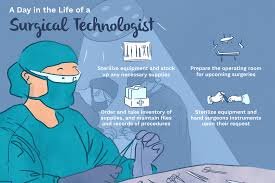
anti booing technology
In recent years, the landscape of live events, sports, and public performances has faced a significant challenge: audience discontent expressed through booing. This negative feedback can impact performers, athletes, and event organizers alike. Enter anti-booing technology—a groundbreaking innovation aimed at transforming how audiences interact with live performances. This article delves into the concept of anti-booing technology, its implications, and its potential to reshape audience experiences.
Understanding Booing: A Cultural Phenomenon
The Origins of Booing
Booing has been a form of audience expression for centuries. Historically, it serves as a way for spectators to voice their dissatisfaction or disagreement with a performance or event. From ancient Roman amphitheaters to modern-day sports arenas, booing has evolved but remains a powerful tool for audience feedback.
The Psychological Impact of Booing
The act of booing can have profound effects on performers and athletes. Research indicates that negative audience reactions can lead to decreased performance quality, increased anxiety, and even long-term psychological effects. Understanding these repercussions is crucial for developing effective solutions.
Introducing Anti-Booing Technology
What is Anti-Booing Technology?
Anti-booing technology encompasses various tools and systems designed to mitigate or eliminate negative audience feedback during live events. This technology aims to foster a more positive atmosphere by encouraging constructive criticism and reducing the emotional toll on performers.
How Does It Work?
Anti-booing technology typically employs sound modulation techniques to neutralize booing sounds or replace them with positive reinforcement noises. Advanced algorithms analyze audience reactions in real time, allowing event organizers to respond dynamically to crowd sentiment.
The Components of Anti-Booing Technology
Sound Modulation Systems
One of the core components of anti-booing technology is sound modulation. These systems can detect booing frequencies and either dampen their volume or replace them with applause or cheers. By altering the auditory experience, the technology helps create a more supportive environment for performers.
Audience Sentiment Analysis
Integrating artificial intelligence (AI) for audience sentiment analysis enhances the effectiveness of anti-booing technology. By analyzing social media interactions and real-time crowd reactions, AI can provide insights into audience mood and preferences, allowing for tailored responses during events.
Feedback Mechanisms
Anti-booing technology often includes mechanisms for gathering constructive feedback from audiences. Instead of booing, attendees can submit comments or ratings via mobile apps or interactive platforms. This approach encourages dialogue and helps organizers understand areas for improvement without resorting to negativity.
Benefits of Anti-Booing Technology
Enhanced Performer Well-Being
By reducing negative feedback in real time, anti-booing technology can significantly improve the mental health and performance quality of artists and athletes. A supportive atmosphere fosters creativity and confidence, allowing performers to thrive.
Improved Audience Experience
Audiences benefit from a more enjoyable experience when negative expressions are minimized. With a-booing technology in place, spectators are more likely to engage positively with events, leading to higher satisfaction rates.
Fostering Constructive Criticism
Encouraging constructive criticism over booing promotes a culture of improvement rather than negativity. This shift can lead to better performances as artists receive actionable feedback rather than emotional outbursts.
Challenges and Criticisms
Authenticity Concerns
One significant criticism of anti-booing technology is the potential loss of authenticity in audience reactions. Critics argue that booing is a natural part of live performances and that suppressing it could lead to an artificial atmosphere devoid of genuine audience engagement.
Technical Limitations
While sound modulation systems are innovative, they are not foolproof. Technical glitches or inaccuracies in detecting booing could lead to unintended consequences, such as misinterpreting genuine applause as booing or vice versa.
Ethical Implications
The ethical implications of manipulating audience reactions raise questions about transparency in live events. Audiences may feel deceived if they discover that their genuine expressions are being altered or suppressed.
Real-World Applications of Anti-Booing Technology
Sports Events
In professional sports, a-booing technology has garnered attention as a means to enhance player performance and maintain fan engagement. Teams are exploring its use during games to create a more positive atmosphere while still allowing fans to express their opinions constructively.
Concerts and Live Performances
Concert venues are increasingly adopting a-booing technology to support artists during performances. By fostering an encouraging environment, venues aim to enhance the overall experience for both performers and attendees.
Public Speaking Events
Public speaking engagements can also benefit from anti-booing technology. Speakers often face critical audiences; by minimizing negative feedback, speakers can focus on delivering their message effectively without fear of backlash.
The Future of Audience Engagement
Evolving Technologies
As technology continues to advance, so too will the capabilities of a-booing systems. Future developments may include enhanced AI algorithms capable of predicting audience reactions before they occur, allowing for preemptive adjustments during events.
Shifting Cultural Norms
The integration of a-booing technology may also influence cultural norms surrounding audience engagement. As audiences become accustomed to more positive interactions at live events, traditional forms of expressing dissatisfaction may decline in popularity.
Conclusion: A New Era in Live Performance Engagement
A-b technology represents a significant shift in how audiences interact with live performances. By minimizing negative feedback and promoting constructive criticism, this innovation holds the potential to enhance performer well-being and improve overall audience experiences.While challenges remain—such as authenticity concerns and technical limitations—the benefits of fostering a supportive environment are undeniable. As this technology evolves alongside societal norms around engagement, it may redefine the relationship between performers and their audiences for years to come.In summary, anti-booing technology is not just about silencing discontent; it’s about creating an environment where creativity flourishes and constructive dialogue thrives—an exciting prospect for the future of live entertainment.
Read More: Click Here





1 thought on “Anti Booing Technology: Revolutionizing Audience Engagement”